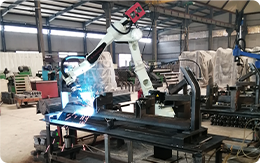 Afrikaans
Afrikaans  Albanian
Albanian  Amharic
Amharic  Arabic
Arabic  Armenian
Armenian  Azerbaijani
Azerbaijani  Basque
Basque  Belarusian
Belarusian  Bengali
Bengali  Bosnian
Bosnian  Bulgarian
Bulgarian  Catalan
Catalan  Cebuano
Cebuano  Corsican
Corsican  Croatian
Croatian  Czech
Czech  Danish
Danish  Dutch
Dutch  English
English  Esperanto
Esperanto  Estonian
Estonian  Finnish
Finnish  French
French  Frisian
Frisian  Galician
Galician  Georgian
Georgian  German
German  Greek
Greek  Gujarati
Gujarati  Haitian Creole
Haitian Creole  hausa
hausa  hawaiian
hawaiian  Hebrew
Hebrew  Hindi
Hindi  Miao
Miao  Hungarian
Hungarian  Icelandic
Icelandic  igbo
igbo  Indonesian
Indonesian  irish
irish  Italian
Italian  Japanese
Japanese  Javanese
Javanese  Kannada
Kannada  kazakh
kazakh  Khmer
Khmer  Rwandese
Rwandese  Korean
Korean  Kurdish
Kurdish  Kyrgyz
Kyrgyz  Lao
Lao  Latin
Latin  Latvian
Latvian  Lithuanian
Lithuanian  Luxembourgish
Luxembourgish  Macedonian
Macedonian  Malgashi
Malgashi  Malay
Malay  Malayalam
Malayalam  Maltese
Maltese  Maori
Maori  Marathi
Marathi  Mongolian
Mongolian  Myanmar
Myanmar  Nepali
Nepali  Norwegian
Norwegian  Norwegian
Norwegian  Occitan
Occitan  Pashto
Pashto  Persian
Persian  Polish
Polish  Portuguese
Portuguese  Punjabi
Punjabi  Romanian
Romanian  Russian
Russian  Samoan
Samoan  Scottish Gaelic
Scottish Gaelic  Serbian
Serbian  Sesotho
Sesotho  Shona
Shona  Sindhi
Sindhi  Sinhala
Sinhala  Slovak
Slovak  Slovenian
Slovenian  Somali
Somali  Spanish
Spanish  Sundanese
Sundanese  Swahili
Swahili  Swedish
Swedish  Tagalog
Tagalog  Tajik
Tajik  Tamil
Tamil  Tatar
Tatar  Telugu
Telugu  Thai
Thai  Turkish
Turkish  Turkmen
Turkmen  Ukrainian
Ukrainian  Urdu
Urdu  Uighur
Uighur  Uzbek
Uzbek  Vietnamese
Vietnamese  Welsh
Welsh  Bantu
Bantu  Yiddish
Yiddish  Yoruba
Yoruba  Zulu
Zulu conveyor snub pulley
Understanding Conveyor Snub Pulleys
Conveyor systems are integral components in various industries, serving as the backbone for material handling, transportation, and logistics. Among the critical components of these systems, the conveyor snub pulley plays a vital role in enhancing efficiency and operational reliability. In this article, we will explore what a conveyor snub pulley is, its functions, design considerations, and its importance in the overall conveyor system.
What is a Snub Pulley?
A snub pulley is a type of roller installed in a conveyor system to redirect the belt around other rollers or pulleys while maintaining tension and controlling the trajectory of the belt. It is typically utilized to create a change in direction of the belt or to ensure proper alignment and tension, facilitating smooth functioning of the entire conveyor system. Snub pulleys can be found in various configurations and are often strategically placed to ensure optimal performance.
Functions of a Snub Pulley
1. Belt Tensioning One of the primary functions of a snub pulley is to help tension the conveyor belt. Proper tension is crucial because it affects the belt’s performance, life span, and stability. By increasing the contact angle between the belt and the drive pulley, snub pulleys help ensure that sufficient tension is maintained, minimizing slippage.
2. Belt Tracking Snub pulleys assist in maintaining alignment and tracking of the conveyor belt. Misalignment can lead to excessive wear, increased maintenance costs, and potential system failures. The proper placement of snub pulleys aids in correcting any tracking issues, ensuring the belt remains centered on the system.
3. Direction Change In conveyor systems where the material needs to be redirected, snub pulleys play an essential role. They can be used to change the direction of the conveyor belt without needing additional space, making them an efficient solution for complex layouts.
4. Supporting Heavy Loads In applications involving heavy materials, snub pulleys contribute to supporting the load without compromising the belt’s integrity. They distribute the load effectively, reducing wear and tear on the conveyor components.
conveyor snub pulley

Design Considerations
When designing a conveyor system with snub pulleys, several factors must be taken into account
- Material Snub pulleys can be manufactured using various materials depending on the application, including steel, plastic, or rubber. The choice of material affects durability, friction, and overall performance of the conveyor system.
- Diameter and Width The diameter and width of the snub pulley must be chosen based on the specific requirements of the conveyor system, including the type and weight of the material being transported. A larger diameter may provide better tensioning but can take up more space.
- Location The placement of snub pulleys is crucial. They must be positioned to achieve the desired belt angle and maintain optimal tension. This requires careful planning and assessment of the entire conveyor layout.
- Maintenance Regular maintenance of snub pulleys is essential to ensure long life and reliable operation. This includes checking for wear, alignment, and lubrication (if applicable).
Importance in Operational Efficiency
The conveyor snub pulley is more than just a component; it is pivotal for the efficiency and longevity of a conveyor system. By enabling proper belt tensioning, tracking, and load support, snub pulleys help reduce downtime, prevent frequent repairs, and improve the overall productivity of material handling processes. In industries like mining, manufacturing, and logistics, where conveyors are heavily relied upon, these components make a significant contribution to operational success.
In conclusion, the conveyor snub pulley plays a crucial role in the effective operation of conveyor systems. By understanding its functions and design considerations, businesses can ensure their conveyor systems run smoothly and efficiently, ultimately contributing to enhanced productivity and reduced operational costs.
-
Revolutionizing Conveyor Reliability with Advanced Rubber Lagging PulleysNewsJul.22,2025
-
Powering Precision and Durability with Expert Manufacturers of Conveyor ComponentsNewsJul.22,2025
-
Optimizing Conveyor Systems with Advanced Conveyor AccessoriesNewsJul.22,2025
-
Maximize Conveyor Efficiency with Quality Conveyor Idler PulleysNewsJul.22,2025
-
Future-Proof Your Conveyor System with High-Performance Polyurethane RollerNewsJul.22,2025
-
Driving Efficiency Forward with Quality Idlers and RollersNewsJul.22,2025





























